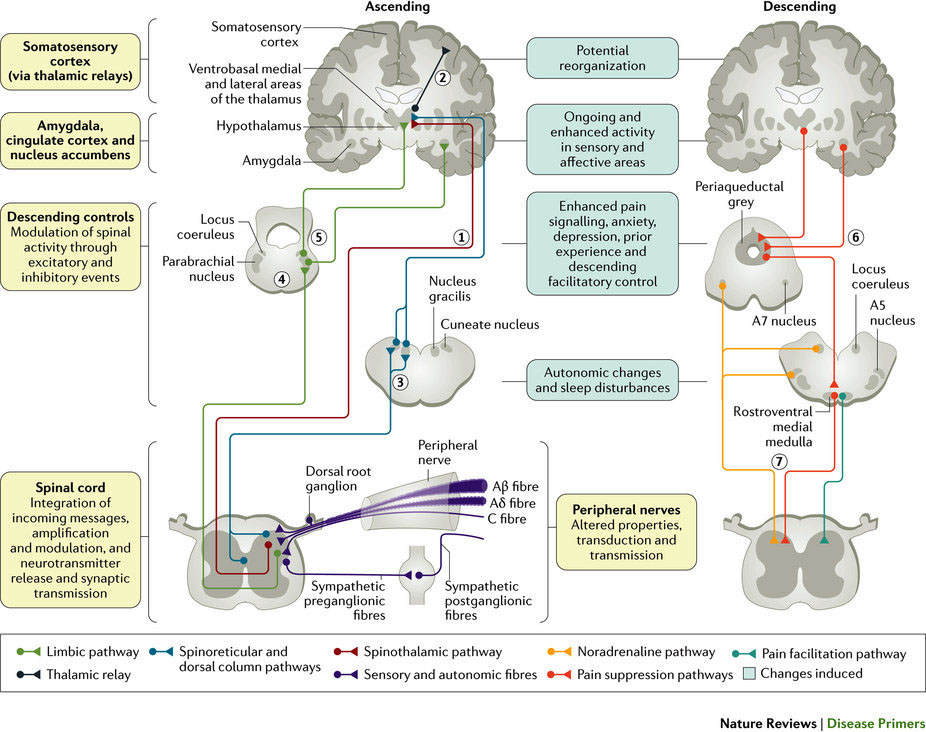神経障害性疼痛
Neuropathic pain
2017年2月16日 Nature Reviews Disease Primers Article number: 17002 (2017) doi: 10.1038/nrdp.2017.2

神経障害性疼痛は、末梢神経線維(Aβ、AδおよびC線維)を含む体性感覚系および中枢ニューロンの病変または疾患によって引き起こされ、一般集団の7〜10%が罹患している。神経障害性疼痛の原因については複数の報告があり、その発生率は、世界的な人口の高齢化、糖尿病の発生率の増加、および化学療法によるがんの生存率の改善に伴って、今後も増加するとみられている。実際、興奮性および抑制性の体性感覚のシグナル伝達のバランス不全、イオンチャンネルの変化および中枢神経系での疼痛メッセージの調節変動のいずれもが神経障害性疼痛に関係している。慢性神経障害性疼痛の疾病負担は、神経障害症状の複雑さ、不良転帰および治療決定の困難さと関連している。重要なこととして、疼痛そのものや誘発疾患の罹患だけでなく、処方薬剤と受診回数の増加によって、神経障害性疼痛患者のQOLが低下する。このような問題があるものの、神経障害性疼痛の病態生理学の理解が深められたことで、神経障害性疼痛の管理に対する多専門的アプローチの必要性が明らかになり、新しい診断手順や個別化治療の開発が進められている。
PrimeView
このPrimeViewでは、適切な治療を提供する上で重要な神経障害性疼痛の診断方法を中心に取りまとめる。
本Primerの図解サマリー
Neuropathic pain is caused by a lesion or disease of the somatosensory system, including peripheral fibres (Aβ, Aδ and C fibres) and central neurons, and affects 7–10% of the general population. Multiple causes of neuropathic pain have been described and its incidence is likely to increase owing to the ageing global population, increased incidence of diabetes mellitus and improved survival from cancer after chemotherapy. Indeed, imbalances between excitatory and inhibitory somatosensory signalling, alterations in ion channels and variability in the way that pain messages are modulated in the central nervous system all have been implicated in neuropathic pain. The burden of chronic neuropathic pain seems to be related to the complexity of neuropathic symptoms, poor outcomes and difficult treatment decisions. Importantly, quality of life is impaired in patients with neuropathic pain owing to increased drug prescriptions and visits to health care providers, as well as the morbidity from the pain itself and the inciting disease. Despite challenges, progress in the understanding of the pathophysiology of neuropathic pain is spurring the development of new diagnostic procedures and personalized interventions, which emphasize the need for a multidisciplinary approach to the management of neuropathic pain.

